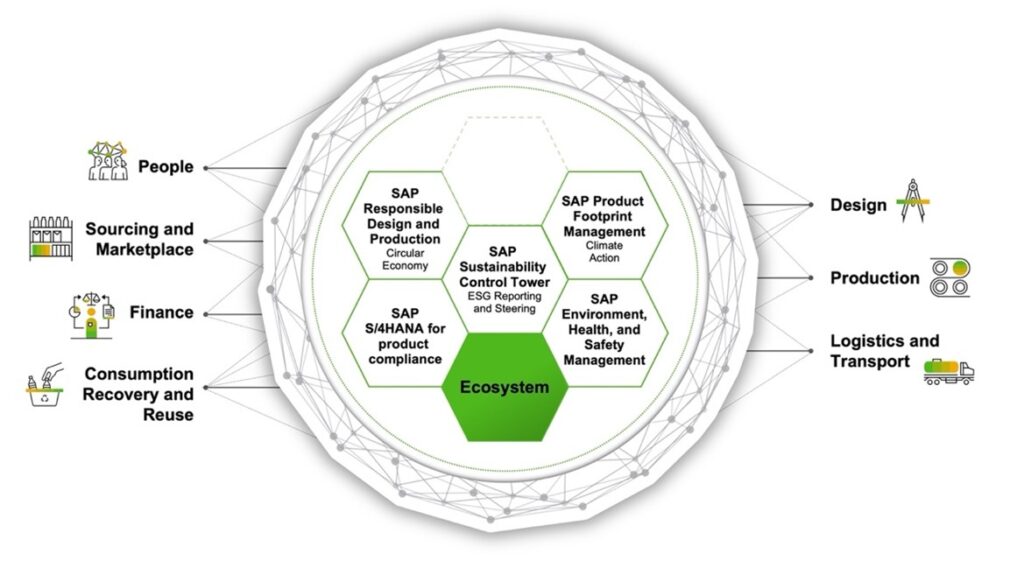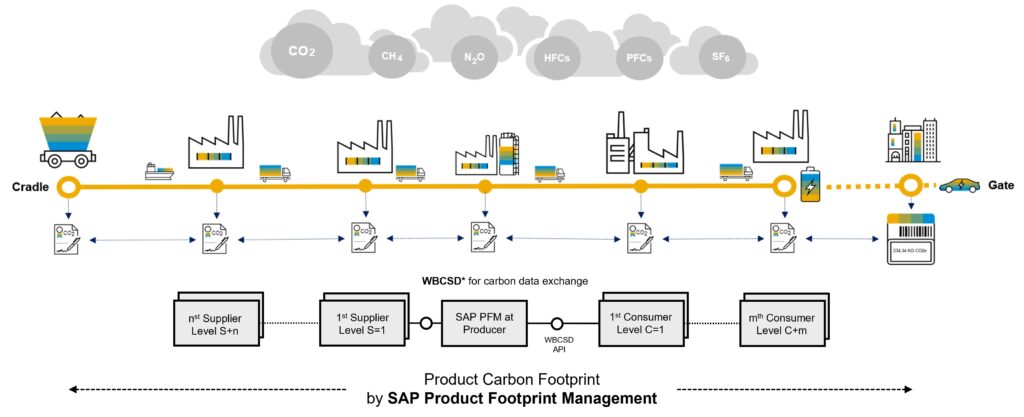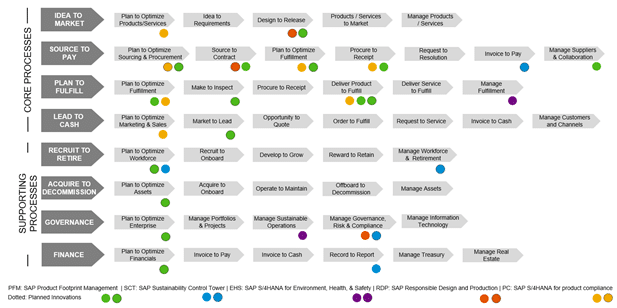Business leaders have traditionally focused on top- and bottom-line performance indicators. However, many organizations now consider their green line as the leading indicator of long-term, sustainable business success. It is imperative for companies to put sustainability at the heart of their business strategy, with a focus on achieving not just financial performance but also steering positive environmental and social impact through their sustainability metrics.
These metrics must be embedded within a company’s core operations and services; traditional annual reports are no longer sufficient. Stakeholders want to understand how a company addresses areas such as climate action, with transparency on transition and adaptation plans based on the carbon footprint of its operations. They also want to understand progress on circular economy objectives by monitoring the reuse and recycling of materials. They want to track and advance people sustainability initiatives by gathering key performance indicators (KPIs) in areas such as diversity and inclusion.
SAP’s product innovations work across the enterprise to deliver on these goals.
Holistic Sustainability Management with SAP Cloud for Sustainable Enterprises
To manage the green line, companies need business process technology to identify, quantify, analyze, and act on data through their end-to-end operations. To enable this, SAP Cloud for Sustainable Enterprises brings together a comprehensive portfolio of solutions to holistically manage sustainability performance. Embedding sustainable business data into processes and networks is one of the five actions business can take toward a sustainable future.

SAP Cloud for Sustainable Enterprises includes the SAP Product Footprint Management and SAP Responsible Design and Production solutions. It also covers existing products like the SAP Environment, Health, and Safety Management application and the SAP S/4HANA Cloud solution for product compliance. The SAP Sustainability Control Tower solution provides an overview of sustainability impacts and performance against green objectives.
We continue to extend the capabilities of SAP Cloud for Sustainable Enterprises. As many companies are accelerating their action for decarbonization, our new capabilities in this area are important.
Driving Carbon Data Transparency Is More Important Than Ever
Accounting for carbon emissions across the organization and its supply chain is a foundational step toward climate action. Businesses are actively looking to reduce their carbon footprints, which requires addressing emissions outside company walls. These emissions — Scope 3 emissions — include everything from goods purchased to business travel to packaging and transportation of raw materials. Scope 3 emissions make up a significant portion of overall emissions for our customers. To derive actionable insights to reduce organizational carbon footprint, it is crucial to measure Scope 3 emissions both at a corporate level and at a product level.
CDP previously reported that supply chain emissions are on average 11.4 times higher than operational emissions. To reduce these emissions, it is important to engage across the sectoral value chain, with both suppliers and end customers, especially for customer-facing sectors like retail and consumer product goods (CPG), which have long upstream value chains. Companies can address significantly larger emission volumes by driving deeper engagement throughout their supply chains.
Earlier this year, SEC Climate Disclosures called on registrants to report on not just their Scope 1 and Scope 2 emissions but also their Scope 3 emissions. This is not the first time companies have faced this request. Previously, TCFD Climate metrics asked companies to disclose the targets they used to assess and manage relevant climate-related risks and opportunities. IFRS takes this approach further with ISSB climate-related draft disclosures, which focus on transition planning, climate resilience, reporting on Scope 1-2-3 emissions, and disclosure of sustainability-related financial information as a part of its general purpose financial reporting.
Enabling SAP Customers to Exchange Carbon Data across Value Chains
To develop and execute an effective decarbonization plan, companies need to receive and process high-quality product-level data on carbon emissions from suppliers and provide high-quality product footprint information to their customers.
However, with most supply chains spanning several industry sectors and consisting of multiple, heterogeneous networks and software components, taking a standardized approach to data sharing is critical. To collect meaningful emissions information, it is important that all parties use the same methodology and common standards for calculating and auditing the carbon footprint of a product.
Therefore, SAP Product Footprint Management implements an API specification developed as part of World Business Council for Sustainable Development (WBCSD) Partnership for Carbon Transparency (PACT). SAP customers can now take informed sourcing and product-development decisions, invest in targeted decarbonization activities, make more accurate disclosures, measure and track decarbonization progress, and adhere to legislative requirements around environmental transparency.
 We intend to use SAP Product Footprint Management as part of SAP networks — for example, in the Catena-X Automotive Network (Catena-X) — to enable a standard-based, secure, and cross-company-wide data exchange throughout the value chain.
We intend to use SAP Product Footprint Management as part of SAP networks — for example, in the Catena-X Automotive Network (Catena-X) — to enable a standard-based, secure, and cross-company-wide data exchange throughout the value chain.
In addition, there is the option to use the GreenToken by SAP solution for multi-tier visibility across the networks. The combination of SAP Product Footprint Management, SAP Responsible Design and Production, and GreenToken forms a potent decarbonization value proposition for industries such as consumer goods, as SAP can demonstrably address material traceability, packaging waste, and supplier-specific carbon data transparency throughout the value chain for both recycled content and land-use change.
New functionality created through our co-development partnership with BearingPoint is already embedded into SAP Product Footprint Management and helps customers identify carbon reduction potential. Customers can thus determine the carbon footprint of a single product based on both direct and indirect emissions sources and upstream activities, building on existing functionality of carbon footprint measurement of purchased goods with tracking emissions resulting from transportation of those goods. Both these greenhouse gas (GHG) emission categories combined significantly contribute to a customer’s upstream and downstream environmental impact.
Integrating and Embedding Sustainable Data across the Intelligent Enterprise, Scaling Carbon Impact
Through open APIs, SAP customers can easily exchange data with their enterprise applications, feeding it into SAP Cloud for Sustainable Enterprises, and then provide the calculated sustainability data back into both SAP and third-party applications.
With the newly introduced sustainability integration components for SAP S/4HANA, customers can benefit from preconfigured functionality enabling reuse of sustainability data across processes supported by SAP S/4HANA, such as record-to-report, lead-to-cash, source-to-pay, and plan-to-fulfill workflows. The component allows a bidirectional flow of information between SAP Cloud for Sustainable Enterprises and SAP S/4HANA in real time.

Examples include:
- In SAP S/4HANA Sourcing and Procurement, customers can make sustainable purchase decisions based on a material’s carbon footprint displayed in purchase requisition, which is then is fed back into SAP Product Footprint Management, keeping sustainability reporting updated. Explore details here.
- In SAP Integrated Business Planning, the supply chain planner can access a comprehensive overview of GHG emissions based on the supply plan for the next 12 months. Planners can dive deeper into the details and try to resolve critical situations and alerts. Explore details here.
- In SAP Logistics Business Network, the material traceability option helps customers gain further insights into sustainability figures of products and share carbon footprint data on the batch level with suppliers, customers, and end consumers of the products. This feature is available with the 2021 release of SAP S/4HANA. Explore details here.
- In plant maintenance, customers can receive automatic updates from SAP Environment, Health, and Safety Management, triggering corrective action if GHG emissions are exceeded. Explore details here.
- In SAP Enterprise Product Development with SAP Responsible Design and Production, customers will be able to reduce packaging and other material waste by design while simulating for a lower carbon footprint. Packaging is typically a significant source of Scope 3 carbon emissions in consumer goods value chains.
We continue to innovate and aim to help customers track emissions data from “cradle to gate” — from the delivery of raw materials to the moment finished products leave the production line, offering intelligent technologies to calculate, exchange, and track carbon footprint information in a trusted way.
Achieving this carbon transparency will pave the way to becoming an intelligent, sustainable enterprise.
Learn More
Sharing sustainability data across your enterprise can help you run more sustainably; learn more about how here. Join the SAP for Sustainability area of SAP Community to stay up-to-date with news and announcements about our growing portfolio of sustainability solutions. In addition, check out past and current openSAP online courses covering a variety of sustainability topics.
Gunther Rothermel is head of SAP S/4HANA Sustainability Management at SAP.
Anita Varshney is global vice president of Strategy for SAP S/4HANA Sustainability at SAP.



